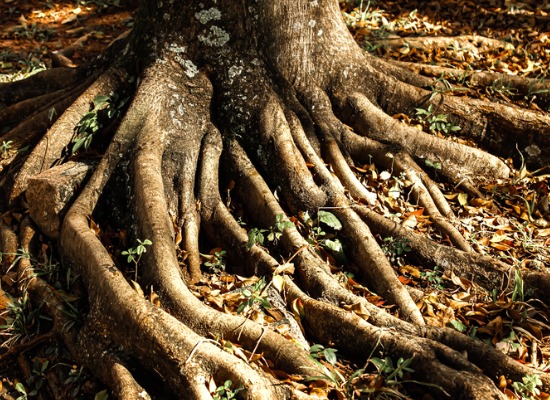TREE EDUCATION

The survival of your tree depends on a number of different factors. One of the most important aspects of tree preservation is root health — roots supply nutrition and water to the rest of the tree, store food, synthesize hormones, and provide structural support, all of which are integral for trees to grow and thrive. Root damage is an often unseen and overlooked cause of tree failure but, if caught early enough, it can be treated and prevented from occurring again in the future.
Our master arborists in Gainesville with SkyFrog Tree Service list the most common signs that indicate the presence of root damage and what you can do to treat the issue and prevent tree roots from harm in the future.
Contact us today for more information about our insured tree services and to request a free estimate.
When a tree's roots are damaged, critical tree-system functions are disrupted. This causes the tree to exhibit a number of visual signs that indicate something is wrong. Even if you can't see what's going on with your tree's roots underground, your tree will likely show signs of root damage above ground. Common symptoms of root issues include the following issues.
Trees with root damage require a greater amount of TLC than healthy trees might. If your tree's roots are damaged and your tree isn't getting enough water, then the tree may not recover sufficient nutrients to recover and grow back. Give your tree a thorough soaking, particularly if it hasn't rained in a while, to help the roots better absorb the nutrients from the soil. Before watering, test the soil for dryness. An easy way to do this is by sticking a screwdriver into the soil; if it comes out dry, it's likely your tree could use watering. Be sure not to overwater your trees, so as to avoid the development of root rot and to help prevent failure in trees that already exhibit a lean.
When a tree's roots sustain damage, especially if the soil has been compacted, the roots likely need professional root pruning and aeration to the soil. Improved soil aeration helps soil nutrients, water, and air to better reach tree roots and likewise alleviated soil compaction. And just as tree limbs and branches require regular pruning, so too does your tree's roots. Root pruning helps keep trees healthy, avoid root disturbances, and isolates any disease, preventing it from spreading to other parts of the tree. Contact us today for more information about soil aeration and pruning and to schedule an appointment.
Some indicators of root problems can be easily detected by home and business owners, while others can only be diagnosed and resolved by a professional arborist, such as those with SkyFrog Tree Service. Our master arborists are board certified and can accurately diagnose root problems and recommend corrective action based on results of the assessment. Although signs of root damage may not be visible until years after the damage occurs, diagnosing root issues early is key to the survival of all trees. We offer a wide range of services tailored to meet the needs of our customers' lawns, gardens, and landscapes, including mature tree care and new tree establishment. Contact us today to schedule an appointment for tree care.